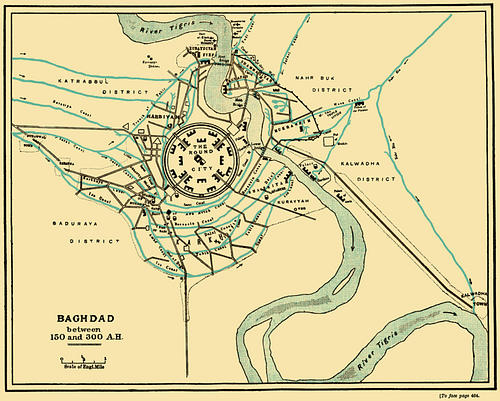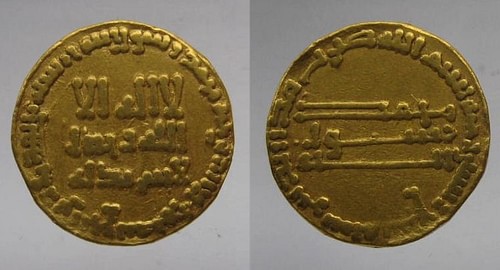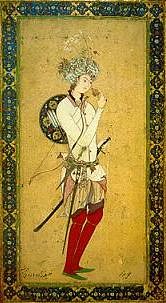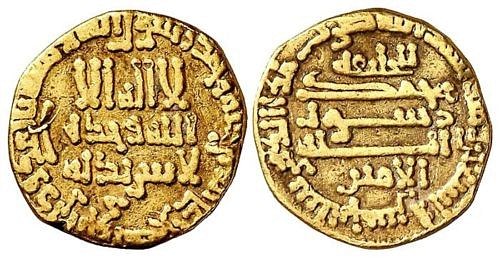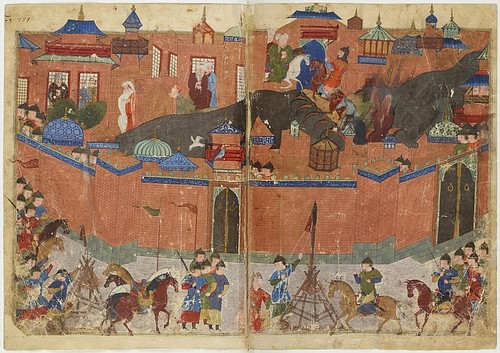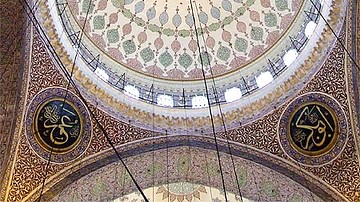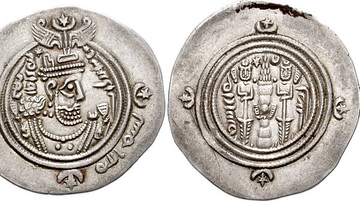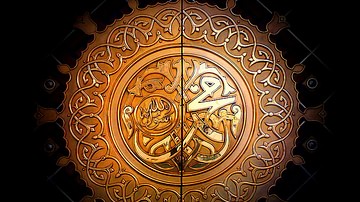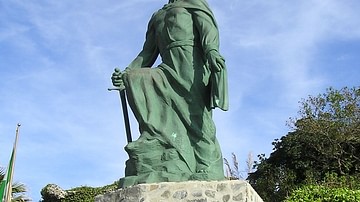
The Abbasids were an Arabic dynasty that initially ruled over most of the Islamic empire (save some western parts) after assuming the caliphate in 750 CE, later on, their empire fragmented, however, they retained spiritual supremacy as caliphs until 1258 CE. They assumed the caliphal title after ousting the ruling Umayyad Dynasty, hence serving as the second dynasty to serves as a Caliphate (632-1924 CE, intermittently).
By the time of the Crusades (1195-1291 CE), they were a mere shadow of their former past. In 1258 CE, their rule came to an end after the Mongols destroyed Baghdad. A series of “shadow caliphs” continued under the suzerainty of the Mamluk Sultanate of Egypt (1250-1517 CE). In 1517 CE, with the conquest of the Mamluk Sultanate by Sultan Selim I of the Ottoman Sultanate (1299-1924 CE), the title was officially transferred to the Turks, although they had been claiming it long before that time. With the Abbasids died the era of Arab supremacy over Islam.
Prelude
The institution of caliphate was conceived in 632 CE after the death of the Islamic Prophet Muhammad (570-632 CE). In the eyes of the Sunni Muslims, the first four sovereigns were part of the Rashidun Caliphate (632-661 CE, rightly guided caliphs), but the Shia Muslims discredit the first three as usurpers to the rightful throne of the 'Ahl al-Bayt' - the household of the Prophet - they only consider the fourth one, Ali (r. 656-661 CE, a cousin and son-in-law of the Prophet), as their spiritual leader or imam (the first of a long series). After the murder of Ali in 661 CE, there was a shift to absolute monarchy in Islamic history, embodied by the Umayyad Dynasty (661-750 CE).
The Umayyads were generally excellent administrators and kept the realm in check through a potent mixture of politics and brute force of their military might. However, one problem that they failed to contain and instead helped invigorate was the alienation of various Arab and non-Arab factions, most notably: the Shias and the Persians. Moreover, by the end of their era, the inner circle of the ruling family had a falling out; their unity was shattered and their grip on the empire loosened. The last Umayyad sovereign, Marwan II (r. 747-750 CE) then faced the suppressed resentment and grievances of his people in the manifestation of open rebellion.
The Abbasid Revolution
Abbas ibn Abd al-Muttalib (l. c. 568-653 CE) was one of the youngest uncles of Muhammad, and this relation inspired the eponymous revolution led by his descendants. The Abbasids raised the slogan of giving the 'Ahl al-Bayt' their due right – the caliphal throne. The interesting thing in this matter is that the rebels never specified exactly what they meant by 'Ahl al-Bayt'; Shia Muslims refer to the family of Ali by this name, whereas the Abbasids were referring to themselves as such.

The mastermind of this plot was a mysterious man named Abu Muslim (d. 755 CE). The details of this man elude us; what we do know is that he struck the final nail in the coffin of Umayyad supremacy and laid the foundation of Abbasid rule through his meticulously planned scheme and ingenious political manoeuvring.
Caliph Marwan was soon brought out of respite as he was needed to defend his realm; but it was already too late, the hitherto underground movement had gained momentum and by 750 CE, the Abbasid revolution was at its climax. In a state of desperation, the Caliph ordered the capture of the leader of the Abbasid clan, Ibrahim; he was killed in cold blood. His younger brother, Abu Abbas then assumed the charge of the movement and swore the severest of all retributions.
The bulk of the Abbasid forces, under the command of Abu Abbas, met with Marwan's army near the Greater Zab river (750 CE) and emerged victorious as the caliph's army fled the field of battle in a miasma of panic. Marwan, who had escaped to Egypt to muster up his forces from the western regions, was found and killed. Abu Abbas as-Saffah – “the bloodthirsty” (r. 750-754 CE) was then declared caliph in Kufa; the Shias realized only too late that their emotions and their love for the descendants of Ali had been used to serve the purpose of the Abbasids instead.
The Dawn of Abbasid Rule
After his victory at Zab, as-Saffah immediately rushed the bulk of his army to Central Asia to halt the expansion of the Chinese Tang Dynasty – their advance was checked at the battles of Talas (751 CE) when the Muslims incurred upon them a decisive defeat. But amiable relations followed soon after this brief episode of violence, ushering in a new era in the Islamic history as, instead of expansion, the Abbasids decided to aggrandize and secure what they already possessed.
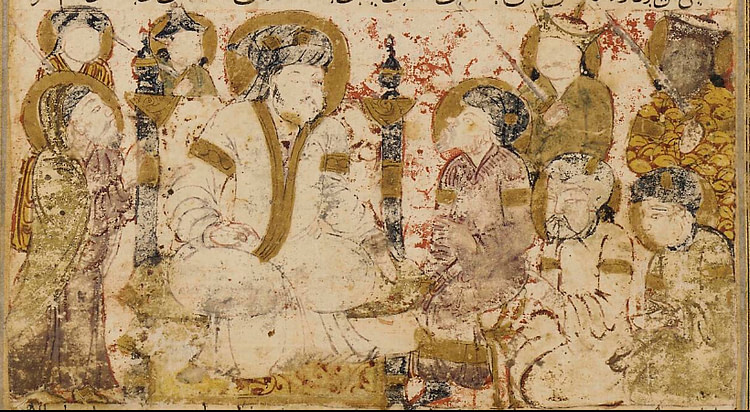
As-Saffah enacted vengeance on the Umayyads – sparing neither the living nor the dead. Umayyad graves in Syria were dug out and their remains were torn and burnt, and the living male members were all massacred. Those who went into hiding to escape such a horrid fate were lured out with a dinner invitation and promises of safety and reconciliation, only to be treacherously murdered in plain sight of the ruling party, whose members continued to feast indifferent to the moans of their dying victims.
Only a young lad named Abd al-Rahman I escaped this slaughter and raced all the way across the Abbasid realm to Spain, where he founded the Emirate of Cordoba in 756 CE. Abu Abbas as-Saffah died just four years after assuming the office; the sceptre was then taken up by his younger brother Ja'afar, titled as al-Mansur ("one who is victorious", r. 754-775 CE). This trend of adopting inspiring titles was continued by later Abbasid rulers.
Al-Mansur & Baghdad
One thing that the Abbasids had been lacking hitherto was a capital of their own. The Fertile Crescent had been a valued place in human history from time immemorable, and it was there that al-Mansur commissioned the creation of a new capital near the Tigris River - Baghdad, a bustling metropolis that humbled all European cities of the time in every standard.
Al-Mansur, like his brother, committed severe atrocities – this time the wrath of the house of Abbas was unleashed on the descendants of Ali. Thinking that they were instigating a plot against him, he provoked them to revolt and then crushed the rebellion (762-763 CE) with extreme ruthlessness. Abu Muslim (d. 755 CE), the man responsible for establishing the Abbasid Dynasty, also became his target, owing to his increasing power; the mutilated body of his house's beneficiary was unceremoniously discarded in the Tigris River.
Both as-Saffah's and al-Mansur's cruelty to their opponents trespassed all boundaries of humanity – the people who had hitherto felt that the Umayyads were demonic beings who would fuel up the flames of hell, now felt sympathetic to the family. Al-Mansur was a strong diplomat, and in true sense, the actual founder of the dynasty, but his inhumane nature overshadows his achievements.
Al-Mahdi & His Sons
Highly magnanimous and deeply pious, al-Mahdi (775-785 CE) turned out to be quite a different person as compared to his father al-Mansur – though his enemies were never spared in the battlefield, his generosity to his people knew no bounds. He took all steps in his power to reverse the wrong-doings of his father against the Alids, he released their captives with dignity and showered them with his wealth as compensation for their losses. Al-Khayzuran (d. 789 CE), the love of his life, was a slave girl, whom he freed and raised to the status of queen.
However, the Caliph was never to be taken lightly; Byzantine incursions into Muslim territories were met with a stern response from the sovereign. Arab-Byzantine relations took a bad start when a Muslim envoy sent by the Prophet himself was slain in cold blood and, following this murder, hostilities erupted. Although initially fruitless, these wars brought a heap of lands and riches for the Rashidun Caliphate later on. Moreover, since the locals of these newly conquered lands were mostly Copts, they preferred Muslim rule and, in fact, even assisted their new overlords against the Byzantines (who used to persecute the former). By the time of the Abbasids, a status quo was held firmly in place, the only eastern possession of the Byzantines was Anatolia but time and again different rulers tried to push their boundaries further through the Abbasid realm. Their plans were consistently foiled, and as punishment, heavy tributes were extracted from them.
In 782 CE, al-Mahdi sent his son, the future Harun al-Rashid, to chastise Empress Irene's (r. 780-790 CE) forces. Faced with devastating setbacks in the field, and cowed up in their strongholds, the Byzantines were forced to agree for a peaceful settlement. The Caliph, however, did not live long to enjoy his successes; he was poisoned by a concubine of his and was succeeded by his elder son: al-Hadi (r. 785-786 CE), who was to be followed by Harun, another son by Al-Khayzuran.
Al-Hadi however, did not feel bound by the covenant of his father and openly expressed his plan to pass on the seat to his sons. He also resented his mother's deep influence amongst the ministers and did all that he could to undermine her authority (some even go as far as to claim that he attempted to poison her). However, as fate would have had it, the young sovereign died in the prime of his youth. Though some claim that he contracted an incurable disease, others feel that his death at such a pivotal moment was simply too opportune for so many people to be a coincidence. The circumstances surrounding his departure from his earthly abode are a matter of incessant debate and speculation.
The Golden Age
Caliph Harun al-Rashid (r. 786-809 CE) was the most prominent ruler of the Abbasid Dynasty, even stripped of his legendary status in stories and fables, the actual man still had an unparalleled personality. He was a patron of arts and learning and wished for Muslims to lead the world in that matter. The Grand Library of Baghdad, the Bayt al Hikma (House of Wisdom), was established to serve this particular purpose. Here, the classic works of the Greeks were translated into Arabic and, in time, these works did indeed serve to fuel the greatest minds of Europe to give the world a rebirth: the Renaissance.
His reign marks the start of the golden age of learning; although Harun was not himself interested in administering the state, he did ensure that such a delicate task be given to the most talented and honest of men. Not only did his government make great advances in administration but he also showed great competence in battle. Just as in the time of his father, the Byzantines once again breached the peace treaty and invaded the Muslim realm in 806 CE. Upon reading an insulting letter from the Byzantine emperor Nikephoros I (r. 802-811 CE), Harun was ripe with fury and responded as follows:
“From Harun, the commander of the faithful, to Nicephorus, the dog of a Roman. Verily I have read thy letter; the answer thou shalt, behold not hear (but see instead)!” (Ali, 247)
The Caliph made immediate preparations, took the field himself and inflicted upon his foes, such a terrible defeat that they were forced to accept even further humiliating terms of peace.
It was also during Harun's reign that a major change in the dynamics of power took place: hitherto the caliphs held sole supremacy over the entire Islamic realm. But the western province of Ifriqya was an expensive land to hold, the locals were rebellious and often ignored the caliphal authority. It was in this time that a prominent statesman: Ibrahim ibn Aghlab approached the Caliph with a solution – he asked for the region to be bestowed as a principality to him and his family and in return promised not only to swear fealty to him as his suzerain but also to pay a fixed annual tribute to him; hence the Aghlabids (800-909 CE) of Ifriqya appeared in the annals of history. Without his knowing so, Harun's empire had started on a long course of disintegration.
The real challenge for Harun came from his family: he had to formulate a plan of succession. Two of his most prominent sons were al-Amin and al-Ma'mun; Harun wished to pass over the throne to al-Amin (r. 809-813 CE) but the realm was to be divided between the two brothers: al-Ma'mun was to rule over his territories as a subject of the Caliph and his heir. This plan, however, was doomed to failure.
After Harun's death, civil war broke out between his sons and it expanded to engulf the whole realm in a state of turmoil in its wake, hence it is aptly named as the Fourth Fitna or the great Abbasid civil war (811-819 CE; provincial turmoil persisted until 830s CE). Initially holding the upper hand, al-Amin soon began suffering great losses in the field and the city of Baghdad stood as the sole bastion of his rule. After a prolonged siege from al-Ma'mun's forces, the Caliph decided to surrender. In captivity, al-Amin was treacherously killed by some rogue Persian soldiers; some say that al-Ma'mun was genuinely grieved over the murder of his brother and, to make up for his loss, he adopted his sons as his own and made haste to punish the perpetrators.
Caliph al-Ma'mun (r. 813-833 CE) then assumed control, and although the golden age of Islam was at its climax, it was soon to be over. The war with his brother was over but it would take over a decade for the dust to settle and the realm to be pacified. Al-Ma'mun's love for arts and learning surpassed even his father's, but his decision to rationalize his society, in opposition to the basic beliefs of his Muslim population (such as debating that the Quran could be rewritten/altered) led to him falling from the favour of many Islamic historians.
Loss of Authority
After al-Ma'mun's death, the Abbasids entered a prolonged period of moral and temporal decline. Ma'mun's immediate successors failed to do justice to the grand responsibility that had been incurred upon them; al-Mu'tasim (r. 833-842 CE) and al-Wathik (r. 842-847 CE) let their private Turkish bodyguards extend their influence over the court. The final nail in the coffin of Abbasid dominance was struck when al-Mutawakkil (r. 847-861 CE) was assassinated as part of a court coup instigated by the Turks. Although al-Mutawakkil was a notorious person and has been dubbed as “the Nero of the Arabs”, his assassination gave the Turks an unprecedented hold over his son al-Muntasir (r. 861-862 CE), who had been placed on the throne as a puppet. Fatefully, the young ruler died shortly thereafter.
In 909 CE a rival radicalized Shia (anti-)Caliphate surfaced in the embodiment of the Fatimids, the descendants of Fatima, the Prophet's daughter. They finished the Aghlabids who had owed their fealty to Baghdad and began extending their dominion. Eventually, the Fatimids extended their control over Egypt and even the Hejaz region which included the cities of Mecca and Medina; their sermons were recited in the holiest of the Islamic sites. In 929 CE, the Umayyad Emirate of Cordoba also declared itself as a caliphate.
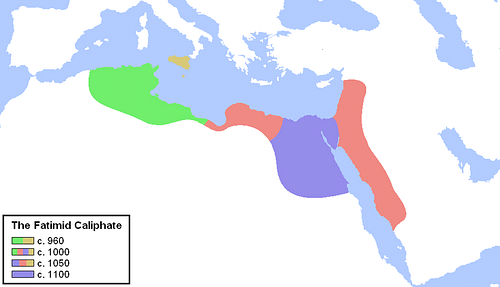
But the biggest humiliation for the house of Abbas, who were Sunnis themselves, was to come in the form of another Shia faction: the Buyids. Ali ibn Buya (l. c. 891-949 CE) was the founder of this eponymous Iranian-based Shia dynasty which, in 945 CE, captured the Abbasid capital of Baghdad. For the Abbasids, the only change was the party pulling their strings and, moreover, their realm was breaking apart as different local rulers declared independence in a snowball event.
In a classic repetition of historical clichés, invaders from the steppes of central Asia came to devastate the Buyids. The Seljuk Turks, who had recently accepted the Sunni version of Islam (although they retained many pre-Islamic features) swept across vast stretches of land, all the way from central Asia to Anatolia, and in 1055 CE, Tughril Beg - a son of Sultan Seljuk - took Baghdad; the Buyids were ousted from the capital, but the caliphs were simply passed from one puppeteer to the next.
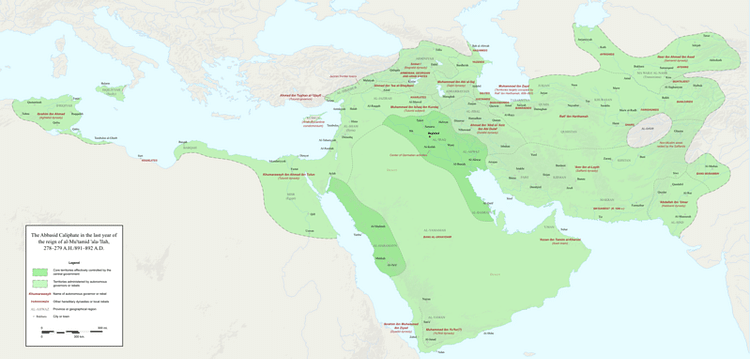
The Crusades
As the 11th century CE progressed, the Seljuks appeared to be an unstoppable juggernaut, but when it drew nearer to a close, they were no longer the strong and formidable force they had been. When European nobles first arrived in the Holy Land in 1096 CE, the Seljuks were fragmented and in no state to resist. The Abbasids, though nominally the leaders of the Muslim ummah (community), were hapless spectators and the Seljuks simply stepped aside from the war.
The sublime state of affairs in Egypt (Fatimids) and the Holy Land (Crusaders) was soon to be reversed by one man, Saladin, and one war banner, Jihad. Saladin (l. 1137-1193 CE) was a Sunni revivalist leader; he rose to prominence in Egypt in 1169 CE, abolished the Fatimid dominance in 1171 CE, and brought the former Fatimid lands under Abbasid suzerainty. He revived the Muslim cause in the Holy Land and dedicated his entire life to Islamic holy war against the Crusaders and their allies. In 1187 CE, he scored a massive victory at the Battle of Hattin, where the bulk of the Latin force was vanquished. Even after his death, the Crusaders never regained their original strength, and eventually, they were forced to flee Acre, their last haven in the Holy Land, in 1291 CE by a new Egyptian Muslim force, the Mamluk Sultanate (1250-1517 CE).
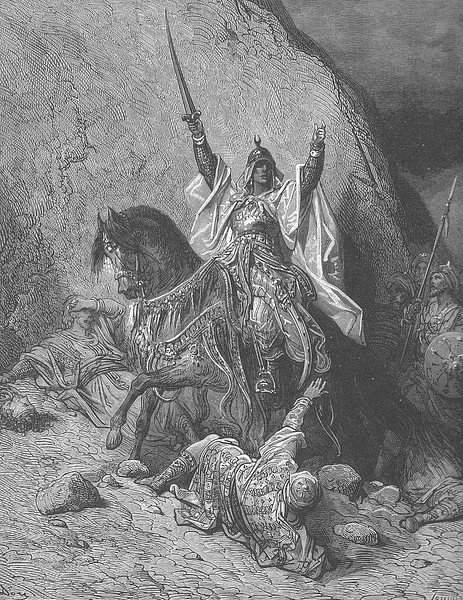
In the backstage of the Crusades, the Abbasids were regaining their military and temporal authority. The man who took charge to this grand undertaking and was also killed by the Seljuks in the process was Caliph al-Mustarshid (r. 1092-1135 CE) who started raising a personal caliphal army. This task was completed by al-Muktafi (r. 1136-1160 CE) who then declared complete autonomy for his house. The Seljuks, enraged by this daring act, besieged Baghdad in 1157 CE, but the city held firm and after several fruitless efforts, the Turks were forced to retreat from the walls. Al-Nasir (d. 1225 CE) is also worth mentioning for his administrative excellence, and in helping the Abbasids regain their prestige by extending his dominion beyond the walls of his capital to Mesopotamia and parts of Persia; historians dub him as the last effective Abbasid sovereign.
The Fall of Baghdad & Aftermath
This newfound independence was threatened by a new force, ironically once again from Central Asia: the Mongols, who had been converted into a force to be reckoned with by Genghis Khan in 1206 CE. The last formal caliph: al-Must'asim (r. 1242-1258 CE) made a huge mistake in disbanding most of his army and then accepting the challenge of Hulegu Khan. The exact reason for such a foolish move is debated; what is clear is that the Caliph was expecting military aid from all corners of Islam – one thing he did not consider was that all Muslim states were busy with problems of their own.
The Mongol forces besieged Baghdad in 1258 CE, and in the typical ruthless way of Mongol warfare, the entire city - including the mighty edifices such as the famous Bayt al-Hikma - was levelled and its entire population massacred. The Caliph was rolled in a carpet and trampled under the hooves of horses. Most of the royal family was killed, save for one boy who was sent to Mongolia and one princess who became a slave in Hulegu's harem. The Mongol advance to the heartland of Islam was crushed by the Mamluk Sultanate, in the Battle of Ain Jalut (1260 CE). The Mamluks then raised a lineage of Abbasids as shadow caliphs in Cairo, but these people were merely figureheads. In 1517 CE, Sultan Selim I of the Ottoman Sultanate (1299-1924 CE) conquered the Mamluk lands and passed to caliphal title to his lineage.
Conclusion
The Abbasid propaganda against the Umayyads was very successful but the Abbasids adopted the same administrative policy for which they had gained support against the Umayyads. After dethroning the ruling party, the Abbasids assumed control of a smaller state than their predecessors as Spain had been lost for good; the fragmentation of the Islamic empire had begun with the rise of the Abbasids and not later on as most people believe. The Abbasids had no interest in further expansion; they even tried to unite with European powers against their common foe: the Emirate of Cordoba.
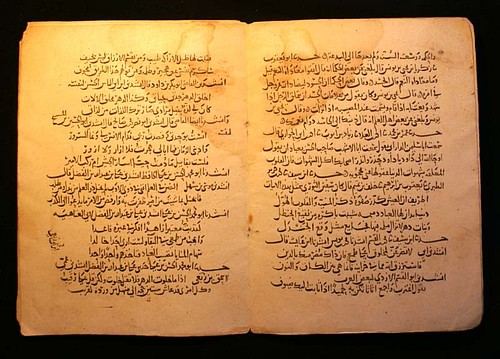
Many Abbasid rulers were not natural politicians, they began to rely upon people to control the affairs of the state. Cracks that had started to appear in the Arab-dominant framework during the time of al-Ma'mun, who was a pro-Persian (since his mother was Persian), were deepened into fissures after his death as the dynasty was plunged into a state of servitude to other parties. The efforts of later caliphs to revive the strength of the Abbasids are without doubt praise-worthy but everyone and everything around them was against them. The sack of Baghdad was an inevitable end of the once-great empire. Their legacy survives to this day in the form of the sharia (Islamic law) and the modern world, as we see it today, due to their patronage to all forms of arts, learning, and especially the scientific inquiry of natural phenomena.

